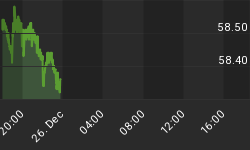The "dumb money" sentiment indicator remains neutral on the equity markets, and the "smart money" remains bearish. It should be noted that this is the seventh week in a row where the "dumb money" is neutral, and this is not a scenario that is generally supportive of higher prices especially with prices on the S&P500 under their 40 week moving average. The ideal situation for higher equity prices would be for the "smart money" to be bullish and the "dumb money" bearish (i.e., bull signal).
The "dumb money" or investment sentiment composite indicator (see figure 1, a weekly chart of the S&P500) looks for extremes in the data from 4 different groups of investors who historically have been wrong on the market: 1) Investor Intelligence; 2) Market Vane; 3) American Association of Individual Investors; and 4) the put call ratio.
Figure 1. "Dumb Money"
The "smart money" (see figure 2) refers to those investors and traders who make their living in the markets. Supposedly they are in the know, and we should follow their every move. The "smart money" indicator is a composite of the following data: 1) public to specialist short ratio; 2) specialist short to total short ratio; 3) SP100 option traders.
Figure 2. "Smart Money"
Volatility has returned to the markets. Intraday price swings are huge. All this is good for the day trader, but for those looking to catch a multi week price move, these sudden and sharp swings can produce moments of anxiety as those on CNBC breathlessly proclaim that the "bus is leaving the station" after every 2% reversal.
It is never easy being out of the market waiting for your pitch. This notion is the antithesis of everything we are told about the markets - "buy and hold" or "buy for the long term" or "you cannot time the market". However, the sentiment data suggests that we should not see higher prices until the "dumb money" becomes more bearish. This is the most likely outcome. For investors to become more bearish, we need to see lower prices or a prolonged trading range that wears investors out. Of course, lower prices will most likely turn the "smart money" more bullish.















